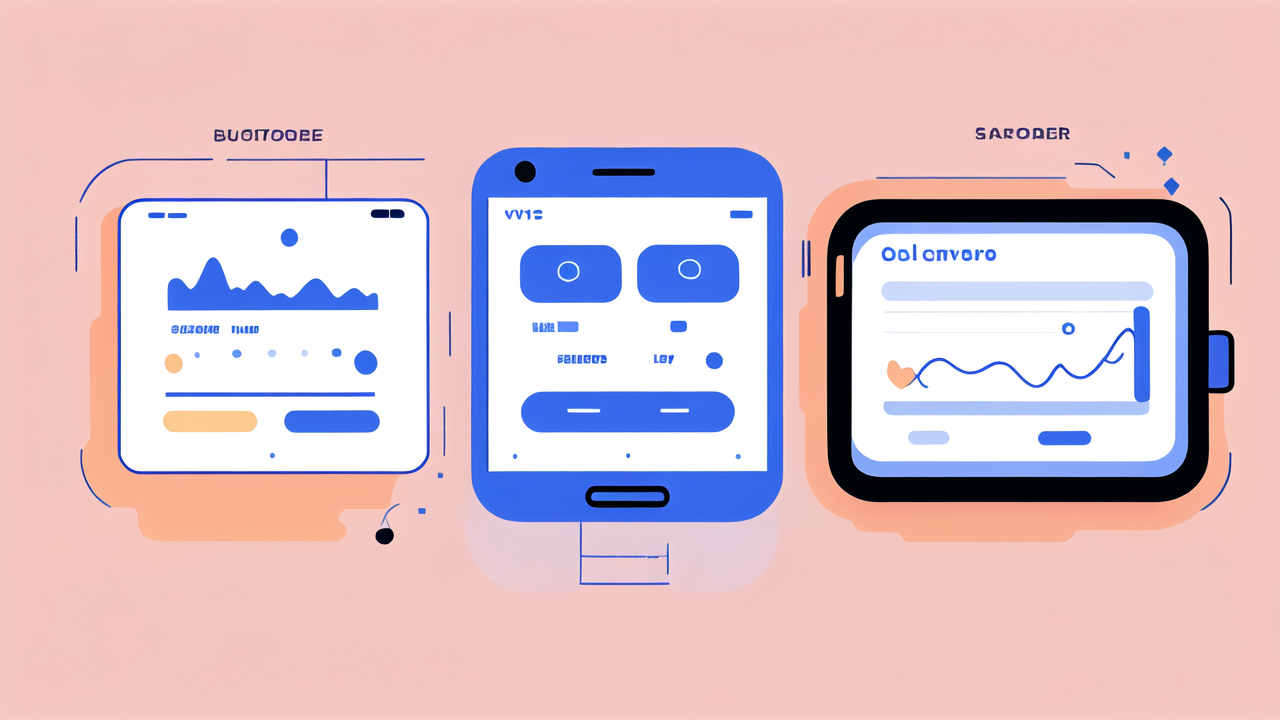Understanding the Digital Watch Phenomenon in the United States
The Evolution of Digital Watches from Niche to Mainstream
Digital watches have come a long way since their inception. They started as simple timekeeping devices. Now, they're powerful tools for health tracking. In the early days, digital watches were bulky and had limited features. They mainly showed the time and date.

As technology advanced, so did digital watches. They became smaller, sleeker, and more powerful. The addition of features like stopwatches and alarms made them more useful. This led to increased popularity among consumers.
The real game-changer came with the rise of smartwatches. These devices combined the functionality of digital watches with smartphone features. They could track steps, monitor heart rate, and even display notifications. This blend of features appealed to a wider audience.
Today, digital watches are no longer just for tech enthusiasts. They've become mainstream accessories. People of all ages use them for various purposes. From fitness tracking to staying connected, digital watches have found their place in everyday life.
Key Features That Are Shaping the Digital Watch Market
Several key features are driving the growth of the digital watch market. These features make digital watches more than just timekeeping devices. They turn them into powerful tools for health and lifestyle management.
- Heart Rate Monitoring: Many digital watches now come with built-in heart rate sensors. These allow users to track their heart rate throughout the day. This feature is useful for both fitness enthusiasts and those monitoring their health.
- GPS Tracking: GPS functionality in digital watches is a game-changer for runners and hikers. It allows for accurate tracking of routes, distances, and speeds. This feature has made digital watches essential for outdoor enthusiasts.
- Sleep Tracking: Digital watches can now monitor sleep patterns. They track sleep duration and quality. This feature helps users improve their sleep habits and overall well-being.
- Water Resistance: Many digital watches are now water-resistant. This makes them suitable for swimming and other water activities. It adds to their versatility and appeal.
- Long Battery Life: Improved battery technology has extended the life of digital watches. Some can now last for weeks on a single charge. This makes them more convenient for everyday use.
These features have transformed digital watches into comprehensive health and fitness tools. They've become indispensable for many users in their daily lives.
The Impact of Digital Watches on Health and Wellness
Enhancing Lifestyle and Fitness with Advanced Metrics
Digital watches have revolutionized how we approach fitness and wellness. They provide a wealth of data that was once only available in specialized settings. Now, users can access this information right on their wrists.

One of the most significant impacts is in fitness tracking. Digital watches can count steps, measure distances, and calculate calories burned. This data helps users set and achieve fitness goals. It provides motivation and accountability.
Many digital watches also offer workout tracking features. They can recognize different types of exercises. Some even provide guided workouts. This turns the watch into a personal fitness coach.
Heart rate monitoring during exercise is another key feature. It helps users optimize their workouts. They can ensure they're exercising at the right intensity. This leads to more effective training and better results.
Digital watches also promote overall wellness. They can remind users to stand up and move throughout the day. Some offer breathing exercises to help manage stress. These features encourage a more active and balanced lifestyle.
Digital Watches as Tools for Personal Health Management
Beyond fitness, digital watches have become valuable tools for personal health management. They offer features that can help users monitor and improve their overall health.
Sleep tracking is a prime example. Digital watches can analyze sleep patterns and quality. This information helps users understand their sleep habits. They can make adjustments to improve their rest and overall health.
Many digital watches now include stress monitoring features. They use heart rate variability to detect stress levels. Some offer guided breathing exercises to help manage stress. This can lead to improved mental well-being.
For those with specific health concerns, digital watches can be particularly useful. Some models can detect irregular heart rhythms. They can alert users to potential issues. This early warning system can be life-saving in some cases.
Digital watches are also becoming tools for managing chronic conditions. Some can track blood oxygen levels. Others can monitor blood glucose levels. These features help users with conditions like sleep apnea or diabetes manage their health.
The data collected by digital watches can be shared with healthcare providers. This gives doctors a more complete picture of a patient's health. It can lead to better-informed treatment decisions.
The Future of Digital Watches in the Wearable Technology Landscape
Innovations on the Horizon for Digital Watches
The future of digital watches looks bright and exciting. Innovations are constantly emerging, promising even more advanced features and capabilities.

One area of innovation is in sensor technology. Future digital watches may include more advanced health sensors. These could measure things like blood pressure or body temperature. Such features would make digital watches even more valuable for health monitoring.
Artificial intelligence is another frontier for digital watches. AI could analyze user data to provide personalized health insights. It could offer tailored fitness recommendations based on individual patterns and goals.
Battery life is an ongoing area of improvement. Future digital watches may use new power technologies. These could extend battery life from weeks to months. Some may even harness energy from the user's movements.
Display technology is also evolving. We may see digital watches with flexible or even holographic displays. This could revolutionize how we interact with these devices.
Voice control and natural language processing are becoming more sophisticated. Future digital watches may offer more advanced voice assistants. These could perform complex tasks and provide detailed information.
The Role of Digital Watches in Integrating IoT and Big Data
Digital watches are set to play a crucial role in the Internet of Things (IoT) ecosystem. They serve as personal hubs, connecting users to a network of smart devices.
In the future, digital watches may control smart home devices. Users could adjust thermostats or turn on lights with a tap on their wrist. This integration would make digital watches central to home automation.
Big data analytics will become more important in the digital watch space. The data collected by these devices can provide valuable insights. It could be used to identify health trends or predict potential issues.
Digital watches may also become more integrated with healthcare systems. They could automatically share data with electronic health records. This would give healthcare providers real-time access to patient data.
In the workplace, digital watches could enhance productivity and safety. They could track employee movements in hazardous environments. They might also facilitate seamless communication in various industries.
As privacy concerns grow, future digital watches will likely focus more on data security. They may offer advanced encryption and user control over data sharing.
The future of digital watches is about more than just telling time. They're evolving into powerful, connected devices that enhance our health, productivity, and daily lives.




Leave a comment
This site is protected by hCaptcha and the hCaptcha Privacy Policy and Terms of Service apply.